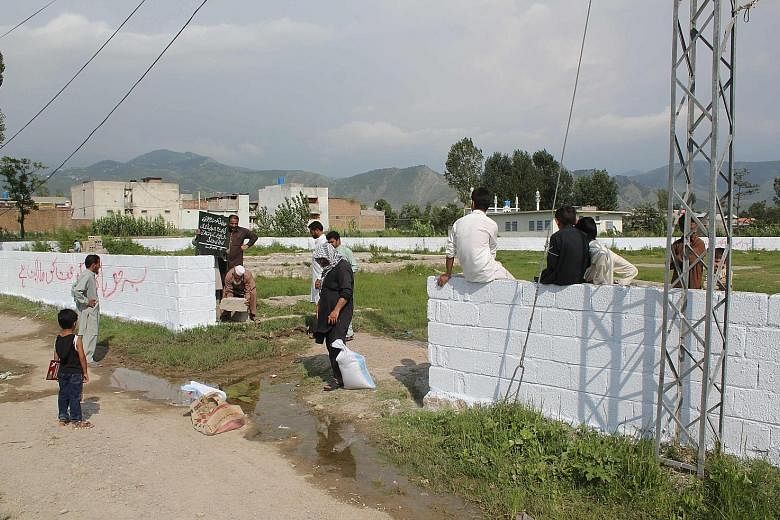ISLAMABAD • A years-long Pakistani land dispute pitting the military against the civilian government is culminating in one seemingly simple question: Should the field where late Al-Qaeda founder Osama bin Laden's compound once stood be turned into a playground, or a graveyard?
The local cantonment administration, largely controlled by the military, is pushing for the graveyard. They seek to rectify "a serious shortage of graveyards in the area", said Mr Zulfiqar Ali Bhutto, a cantonment administration official, according to The Times in London.
The government, rather, wants a playground. Mr Mushtaq Ghani, the Information Minister of the Khyber Pakhtunkhwa provincial government told The Times: "You can't develop a cemetery in the middle of houses."
But this seemingly minor disagreement is a reflection of years of disputes between the two stakeholders over who exactly controls the 3,800 sq ft plot in Abbottabad, Pakistan, where Osama hid for five years.
For a year after Navy Seal Team Six raided the compound in May 2011, killing the terrorist leader, the property remained vacant.
"Nobody went near the place and nobody claimed its ownership," Mr Omar Farooq, the deputy director of the cantonment administration told NBC News. "According to the law, we took charge."
But reporting by the BBC found that authority over the land was given to the provincial government.
The dispute is not too surprising, given that the government and military have overlapping authority in the area. The compound lies within the Khyber Pakhtunkhwa province, so naturally, the provincial government has some claim.
But it also lies within the boundaries of the Abbottabad Cantonment, an area that has significant military facilities alongside civilian residents and private businesses. The cantonment administration, mostly senior military officers who ultimately report to the country's ministry of defence, regulates construction in the area, among other operations.
Between these two ruling groups, neither is unilaterally supreme, causing the continued dispute.
In 2012, under order of the government, the military demolished the compound and the wall surrounding it in an effort to prevent it from becoming a pilgrimage site for Islamist radicals.
Ever since, the plot has remained an empty field. But this year, the land dispute started to heat up.
In May, the military occupied the area and surrounded it with a rope fence, according to the BBC. It was promptly taken down after an intervention by the local government.
But two months later, in mid-July, the military built a metre-high wall surrounding the area, taking government officials by surprise.
Local residents tend to want to loosen the association between their neighbourhood and the mastermind of the 9/11 terrorist attacks in the US. According to The Times, this means favouring the playground, which does not conjure up thoughts of death and destruction.
And some, still, have other ideas for the property, like a girls' school, according to the BBC.
For now, the walled-off plot remains empty.
THE WASHINGTON POST

